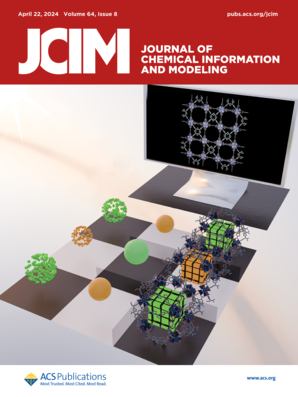KNDM:一种用于药物和微生物关联预测的知识图转换器和节点类别敏感对比学习模型。
IF 5.3
2区 化学
Q1 CHEMISTRY, MEDICINAL
引用次数: 0
摘要
研究证明,人体内的微生物组可以通过影响药物的毒性和活性来促进或抑制药物的治疗效果。因此,识别与药物相关的微生物有助于了解药物如何在这些微生物的影响下发挥作用。最新的药物相关微生物预测方法是基于图学习开发的。然而,这些方法未能从知识图谱的角度充分利用药物和微生物实体的多样性特征,也未能从元路径的角度充分利用多个元路径之间的上下文关系。此外,以前的方法忽略了从知识图中提取的实体特征与从元路径中提取的节点语义特征之间的一致性。为了解决这些限制,我们提出了一种基于知识图转换器和节点类别敏感对比学习的药物和微生物关联预测模型(KNDM)。该模型学习药物和微生物实体的不同特征,对跨多个元路径的上下文关系进行编码,并集成特征一致性。首先,我们构建了一个由药物和微生物实体组成的知识图谱,这有助于揭示任何两个实体之间的相似性和相关性。其次,考虑到知识图谱中实体的异质性,提出了一种实体类别敏感转换器,以整合多种实体类型的多样性及其之间的各种关系。第三,构建多个元路径来捕获和嵌入基于药物和微生物节点之间的相似性和关联的语义关系。提出了一种递归门控的元路径语义特征学习策略,以捕获单个元路径的特定语义特征,同时融合多个元路径之间的上下文关系。最后,我们开发了一种节点类别敏感的对比学习策略,以增强实体特征和节点语义特征之间的一致性。广泛的实验表明,KNDM优于8个最先进的药物-微生物关联预测模型,而消融研究验证了其关键创新的有效性。此外,对候选微生物与三种药物(姜黄素、表没食子儿茶素没食子酸酯和环丙沙星)相关的案例研究进一步展示了KNDM识别潜在药物-微生物关联的能力。本文章由计算机程序翻译,如有差异,请以英文原文为准。
KNDM: A Knowledge Graph Transformer and Node Category Sensitive Contrastive Learning Model for Drug and Microbe Association Prediction.
It has been proven that the microbiome in human bodies can promote or inhibit the treatment effects of the drugs by affecting their toxicities and activities. Therefore, identifying drug-related microbes helps in understanding how drugs exert their functions under the influence of these microbes. Most recent methods for drug-related microbe prediction are developed based on graph learning. However, those methods fail to fully utilize the diverse characteristics of drug and microbe entities from the perspective of a knowledge graph, as well as the contextual relationships among multiple meta-paths from the meta-path perspective. Moreover, previous methods overlook the consistency between the entity features derived from the knowledge graph and the node semantic features extracted from the meta-paths. To address these limitations, we propose a knowledge-graph transformer and node category-sensitive contrastive learning-based drug and microbe association prediction model (KNDM). This model learns the diverse features of drug and microbe entities, encodes the contextual relationships across multiple meta-paths, and integrates the feature consistency. First, we construct a knowledge graph consisting of drug and microbe entities, which aids in revealing similarities and associations between any two entities. Second, considering the heterogeneity of entities in the knowledge graph, we propose an entity category-sensitive transformer to integrate the diversity of multiple entity types and the various relationships among them. Third, multiple meta-paths are constructed to capture and embed the semantic relationships based on similarities and associations among drug and microbe nodes. A meta-path semantic feature learning strategy with recursive gating is proposed to capture specific semantic features of individual meta-paths while fusing contextual relationships among multiple meta-paths. Finally, we develop a node-category-sensitive contrastive learning strategy to enhance the consistency between entity features and node semantic features. Extensive experiments demonstrate that KNDM outperforms eight state-of-the-art drug-microbe association prediction models, while ablation studies validate the effectiveness of its key innovations. Additionally, case studies on candidate microbes associated with three drugs-curcumin, epigallocatechin gallate, and ciprofloxacin-further showcase KNDM's capability to identify potential drug-microbe associations.
求助全文
通过发布文献求助,成功后即可免费获取论文全文。
去求助
来源期刊
CiteScore
9.80
自引率
10.70%
发文量
529
审稿时长
1.4 months
期刊介绍:
The Journal of Chemical Information and Modeling publishes papers reporting new methodology and/or important applications in the fields of chemical informatics and molecular modeling. Specific topics include the representation and computer-based searching of chemical databases, molecular modeling, computer-aided molecular design of new materials, catalysts, or ligands, development of new computational methods or efficient algorithms for chemical software, and biopharmaceutical chemistry including analyses of biological activity and other issues related to drug discovery.
Astute chemists, computer scientists, and information specialists look to this monthly’s insightful research studies, programming innovations, and software reviews to keep current with advances in this integral, multidisciplinary field.
As a subscriber you’ll stay abreast of database search systems, use of graph theory in chemical problems, substructure search systems, pattern recognition and clustering, analysis of chemical and physical data, molecular modeling, graphics and natural language interfaces, bibliometric and citation analysis, and synthesis design and reactions databases.

 求助内容:
求助内容: 应助结果提醒方式:
应助结果提醒方式:


